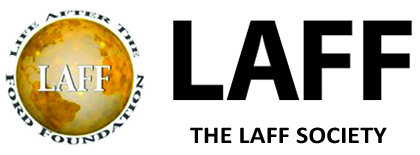NEWSLETTER
|
A Leader With “Vision and Courage” By Barry D. Gaberman
For those of us who were part of Frank’s time at the Foundation, there were two aspects to that experience. One was personal, the other institutional.
On the personal side, I had been with the Foundation for almost eight years when Frank became president, first with the Indonesia field office and after that with the then Asia/Pacific regional office in New York. I had a few opportunities outside the Foundation and it seemed the right time for a change. Then, unexpectedly, I got an offer to be part of the transition.
To help decide whether to accept that offer, I met with Frank to get a glimpse of his vision for the Foundation. It was a vision based less on strategic security issues and more on social justice and human rights. It was a vision that put gender, diversity and equity as a priority in everything the Foundation did, not as just a cluster of discrete program categories among many others.
I was sold and mesmerized by the clarity of his vision. I stayed for another 27 years, first under Frank and then under Susan Berresford, his successor.
While the institutional aspect carried less of an emotional jolt, it was no less important. It contained three important components that were imperatives from the trustees.
The first was to tie the Foundation’s expenditures to the reality of its resources. The trustees had made the decision that the Foundation should strive to operate in perpetuity. To do so, the real purchasing power of the Foundation’s endowment had to be preserved. That meant that Frank had to have the courage to endure the pain of budget cuts in the short run.
The second institutional component was to bring the Foundation’s structure into compliance with its resources. The hard reality was that the Foundation had the super structure of an organization meant to spend more than $200 million but was spending half that amount. If the first component was painful, the second was even more so. It meant paring the staff by letting many good people go. It took courage for Frank to stay the course considering the open criticism the decision evoked.
The last institutional component involved making the Foundation operate as a single, integrated organization. Over the years its programming had devolved into many silos that seldom interacted. The major split was between the United States and the overseas programs. But it didn’t stop there. There were also fiefdoms within the various U.S. programs and among the geographic regions of the overseas programs.
Frank was convinced this was an obstacle to an overall Foundation mission and vision. It was also an obstacle to the transfer of learning across the substantive and geographic program areas. After careful study and reflection, he put in place a new program structure that broke down the silos. He was criticized for not moving faster, but once again he had the courage to stick with his vision.
The two attributes of vision and courage is how I remember Frank.
Barry Gaberman worked at the Foundation from 1971 to 2006.
_______________________
LAFF Remembers Franklin Thomas: Co-Presidents’ Reflections by Suzanne Siskel and Betsy Campbell
He Left the World a Better Place by Susan Berresford
A Man of “Vision, Tenacity and Dignity” by Barron “Buzz” Tenny
Celebrating the Remarkable Legacy of Franklin Thomas by Darren Walker
“A True Humanitarian” by Shepard Forman
From the Class of ’92: “We worked for Frank” by Radhika Balakrishnan, Mahnaz Ispahani Bartos, Natalia Kanem, Anthony Romero and Marcia Smith
Grantees: “Up Front and in the Center” by Charles Bailey
Taking Risks “Is What We Do” by Steven W. Lawry
A Leader With “Vision and Courage” by Barry D. Gaberman
Forging “New Paths on Multiple Fronts” by Judy Barsalou
“The Tallest Tree in Our Forest” by Akwasi Aidoo
|

